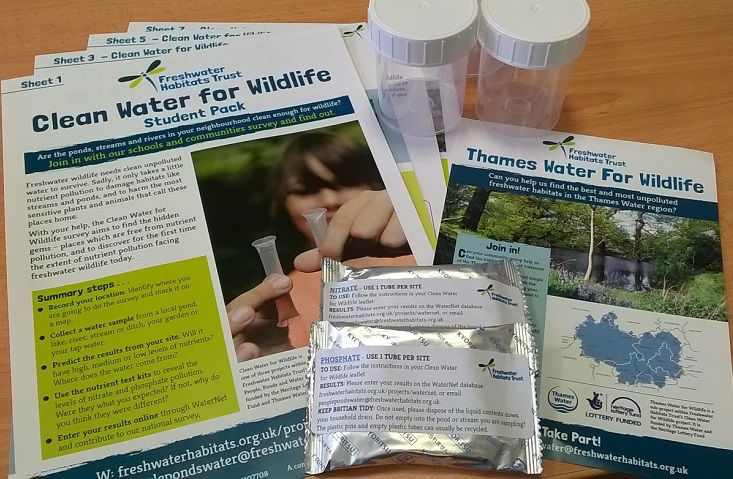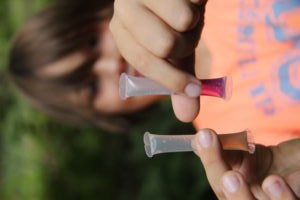Can your school help discover clean water habitats in Wales?
27th April 2017
We’re looking for schools to help discover clean water habitats in Wales – can you help?

Clean Water habitats, free from nutrient pollution, are the best sites for freshwater biodiversity. They support the healthiest communities and some of our rarest plants and animals.
The Clean Water for Wildlife project, funded by the Heritage Lottery Fund and Thames Water, asks volunteers to test freshwater habitats for nitrate and phosphate pollution using quick and easy nutrient testing kits, to help us find these fantastic Clean Water Sites – including ponds, lakes, rivers, streams and ditches.
As part of our Clean Water for Wildlife project we have created a School Activity Box which allows students to actively participant in current scientific research by gathering real data on water quality in freshwater habitats in their neighbourhood.

We are currently looking for school groups in Wales to help test for nitrate and phosphate nutrient pollution in ponds, rivers, streams, ditches and lakes.
Each School Activity Box contains the following equipment, enough for a class of 30 students:
- Nutrient testing kits (1 per 2 students),
- Water sampling pots (1 per 2 students),
- Student information packs (1 for each student),
- Protective gloves (1 pair for each student (classroom activity) and 1 pair to collect the water sample),
- Teacher’s notes,
- Recording forms,
- and 1 pre-paid envelope to send the results back to us.
 The survey is completely free to take part in and involves:
The survey is completely free to take part in and involves:
Sample collection – We suggest students work in pairs to collect a water sample from a nearby freshwater habitat (e.g. garden pond, local stream, garden water butt or even their tap water). They could do this as part of a class outing, or as a homework exercise.
Predict the results – As a classroom exercise students can predict whether they think their water sample will be clean or polluted.
Sample testing – As a classroom exercise, the students use the nutrient kits (one phosphate test and one nitrate test) to test their water samples.
Analyse the results – Compare the classes’ results to look for patterns and trends in the data.
Enter the results online – Send your results via WaterNet (our online portal for the Thames Water for Wildlife survey) and contribute to the national survey.
You can see how to take part in the survey by watching our ‘How to…’ video on YouTube:
There are a limited number of School Activity Packs available and we supply them on a first come, first serve basis. If your school would like to take part, please email Laura Quinlan at peoplepondswater@freshwaterhabitats.org.uk with your name, the name of your school, class size, class age range and address.
Want to know more?
- Read about the Clean Water for Wildlife survey
- Take a look at some of the Clean Water for Wildlife results
- Find out how you can make new clean water ponds for wildlife
